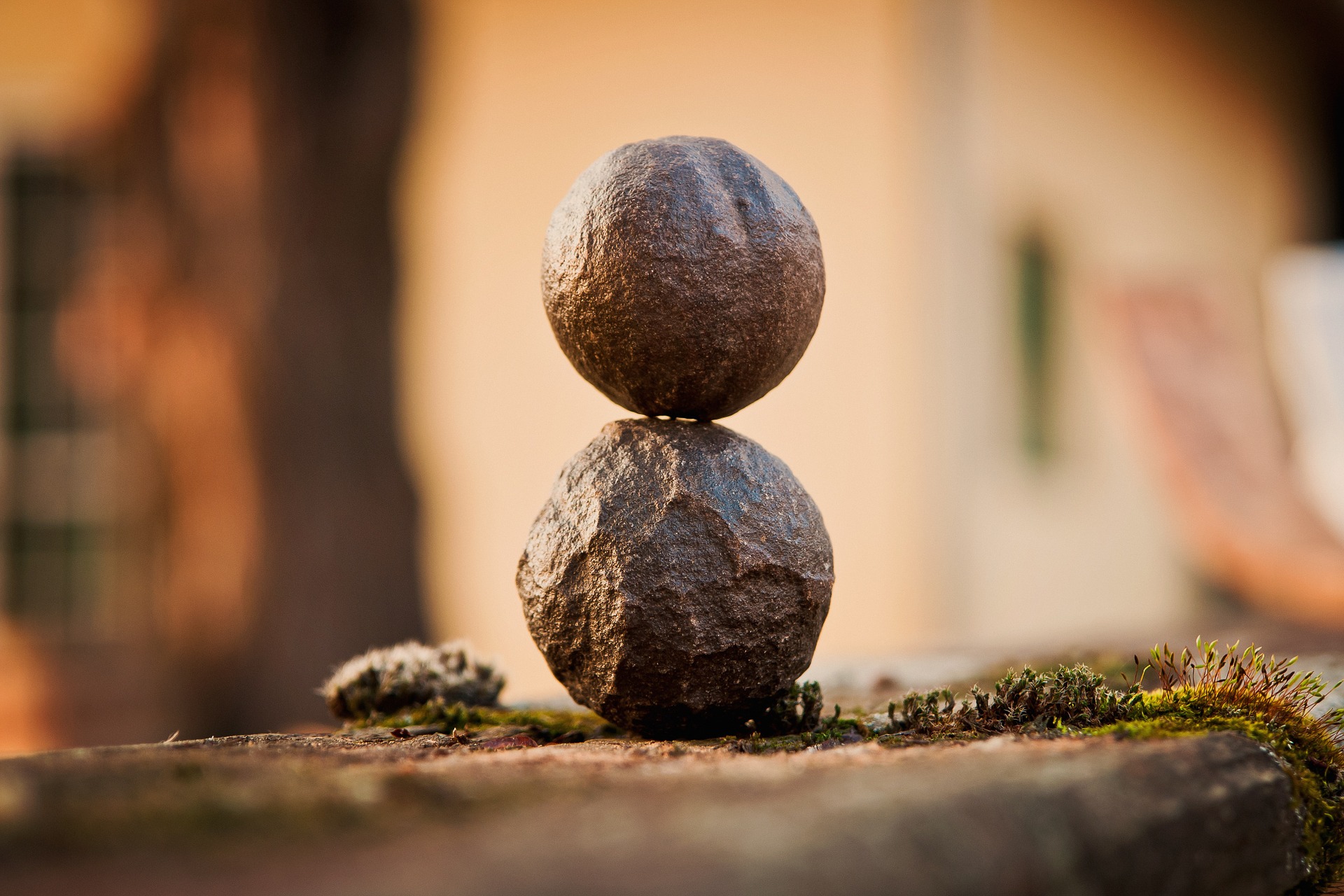Mindfulness. It is a concept that has massively increased in popularity in recent years, with apps, exercises, books and even classes at school dedicated to it. But what actually is it?
What is mindfulness?
Mindfulness is a very simple and basic form of meditation that makes us focus on the here and now, rather than looking at what has happened in the past or what might happen in the future. A regular meditation involves focusing all of your attention on breathing in and out slowly. This allows you to really observe the thoughts that appear in your mind and to understand that they come and go as they please, and most of the time, you have very little control over them. By understanding the lack of power you usually have over them, it allows you to gain more control over them. These thoughts and feelings – both positive ones and negative ones – are transient, coming and going as they please. You – and only you – have the choice whether to let them go or to act on them.
It is thought to be loosely based on Buddhist concepts, although modern mindfulness is often taught in a secular fashion, with no mention to its Buddhist connections. This may be because it allows people from all religions and walks of life to access it without feeling like it has been attributed to a particular religion. Saying that many religions have practiced meditation in one form or another in the past – Hindus were doing it more than 2,500 years ago!
What are the benefits of mindfulness?
Over time, practicing mindfulness is thought to bring about changes to your mood, happiness, and overall mental wellbeing.
Decreases stress
Mindfulness is considered an excellent tool against fighting stress, and studies from Donald & Atkins (2016) back this up. It is thought that it helps to discourage avoidance as a coping technique and looks at ways of dealing with it face on, more so than many other relaxation techniques.
It can also help alleviate stress by improving emotion regulation, leading to a better mood and better ability to handle stress. A state of high relaxation, which is what mindfulness induces, allows a person to lower their blood pressure and heart rate, which is often higher in periods of stress and increases clarity in thinking and perception.
Combine these with a greater sense of wellbeing, and stressful situations seem a whole lot more manageable.
Increases the ability to manage symptoms of illness
While mindfulness can sadly not cure anyone of any physical illnesses, it is thought that it can help those who are suffering from chronic illness by making the symptoms more manageable, in the same way, it decreases feelings of stress and potentially focus on physical pain a little less. It is also likely to affect caregivers of patients in the same positive way.
Decrease symptoms of depression
Mindfulness has long been considered an effective supplement for depression, on top of more conventional medication. It helps to increase feelings of self-kindness and compassion and provides a tool to help those suffering step back from negative emotions, identify them and accept them as something that they do not necessarily have control over.
Helps with resilience
This is especially true when it comes to children, who may be experiencing bullying by giving them a way of considering what is happening from another perspective. Of course, it can also prevent bullying at the source – many bullies suffer from feelings of low self-esteem, so tackling that before it becomes a bigger issue may stop the bullying before it starts.
Increases productivity in the workplace
More and more companies are introducing mindfulness sessions into the workday, and this is for very good reason. The obvious benefits are it reducing stress, meaning employees are less likely to take time off, but it also helps to increase clarity of thought, memory, and creativity, so it is good news for both employees and the powers higher up in the chain.
Myths about Mindfulness
As with any alternative concept, there are plenty of myths flying around about mindfulness, which can put people off. Some of these include:
It is a religious practice
No, it is not. As we mentioned above, while there are some vague links to Buddhism, modern mindfulness is not affiliated with a particular religion. It is, quite simply, a method of mental training. While many people who practice mindfulness are religious, there are plenty of agnostics and atheists who do as well.
You have to sit cross-legged on the floor wearing yoga leggings
You can absolutely sit on the floor wearing yoga leggings, or whatever other apparel you feel comfortable in. You can also practice mindfulness on your daily run, your commute to work, lying in the bath or wherever else you want to, wearing whatever you want.
It is time-consuming
Again, mindfulness can take as little or as much time as you want. It does require patience and persistence, but it does not involve hours of work. For many people, meditation in any form allows them to feel less constrained by time limits, which is a positive thing.
It is complicated
While it may take persistence, mindfulness is anything but complicated. There is no success or failure, even if it feels difficult. It allows you to understand your own mind better.
You have to attend classes
While there are indeed some great classes out there to help you get started on your mindfulness journey, it is not a necessity. You can do it on your own, with a friend, in a group – however, you want. There are some fantastic apps and audio resources out there to help you.

The Basics of Mindfulness
Here is how to bring little pockets of mindfulness into your day to day life;
Set aside some time – As we mentioned above, mindfulness does not require a special place or any specific equipment, just you, some space and some time.
Let your thoughts roll – Mindfulness is not about achieving some wonderous sense of permanent calm or emptying the mind, but about being in tune with your thoughts and the here and now. Remember that whatever thoughts come into your head are impermanent, and it is important to let them flow through without any judgment.
Return to the present moment – Our minds quite often get carried away by our thoughts, which is what leads to stress and anxiety. Mindfulness is the practice of returning to the present moment – concentrate on how the sun feels on your skin, or that quiet buzzing from the refrigerator in the background, refocusing your thoughts and coming back to the here and now.
Be kind to yourself – During your meditation, your thoughts will inevitable have wandered, but it essential that you are kind to yourself. Recognize when it has strayed, and keep bringing it back.
How To Meditate
Here is a really simple meditation exercise:
Sit comfortably – find somewhere supportive and comfortable
Take notice of what your legs are doing – If you are sitting on a cushion, cross your legs in front of you so that you are comfortable. If you are on a chair, rest the bottoms of your feet on the floor.
Keep your upper body straight but not stiff – the idea is to be comfortable, so sit up straight, but allow the natural curvature of your spine.
Take notice of what your arms are doing – Keep your upper arms parallel to your body, and rest the palms of your hands on your legs.
Keep your gaze soft – Contrary to popular thought, it is not necessary to close your eyes – although you certainly can if you want to. Just drop your chin a little and focus your gaze downwards and let whatever appears before your eyes be there.
Feel your breath – This is one of the critical elements of any meditation exercise. Pay attention to the physical process of breathing in and out – the rise and fall of your chest, the feeling of air passing through your nose and mouth.
Notice when your mind wanders – At some point, your mind will begin to stray from your breath and go elsewhere. Don’t block or eliminate these thoughts, but gently bring them back towards your breathing. Be kind to yourself when this (inevitably) happens.
Lift your gaze – When you are ready, lift your gaze, or open your eyes if you have closed them. Take a moment to bring yourself together and take note of the sounds and temperature of your environment, how your body is feeling right now and your thoughts and emotions.
There are so many incredible benefits to practicing mindfulness, with more being discovered all the time. With such positive potential outcomes, the reasons and excuses for not practicing mindfulness are quickly disappearing. Workplaces and even schools are seeing the benefits and are introducing them into the daily routine – and you should too!


